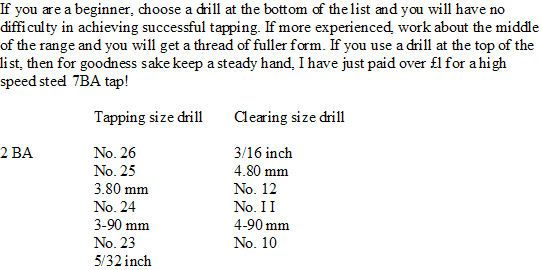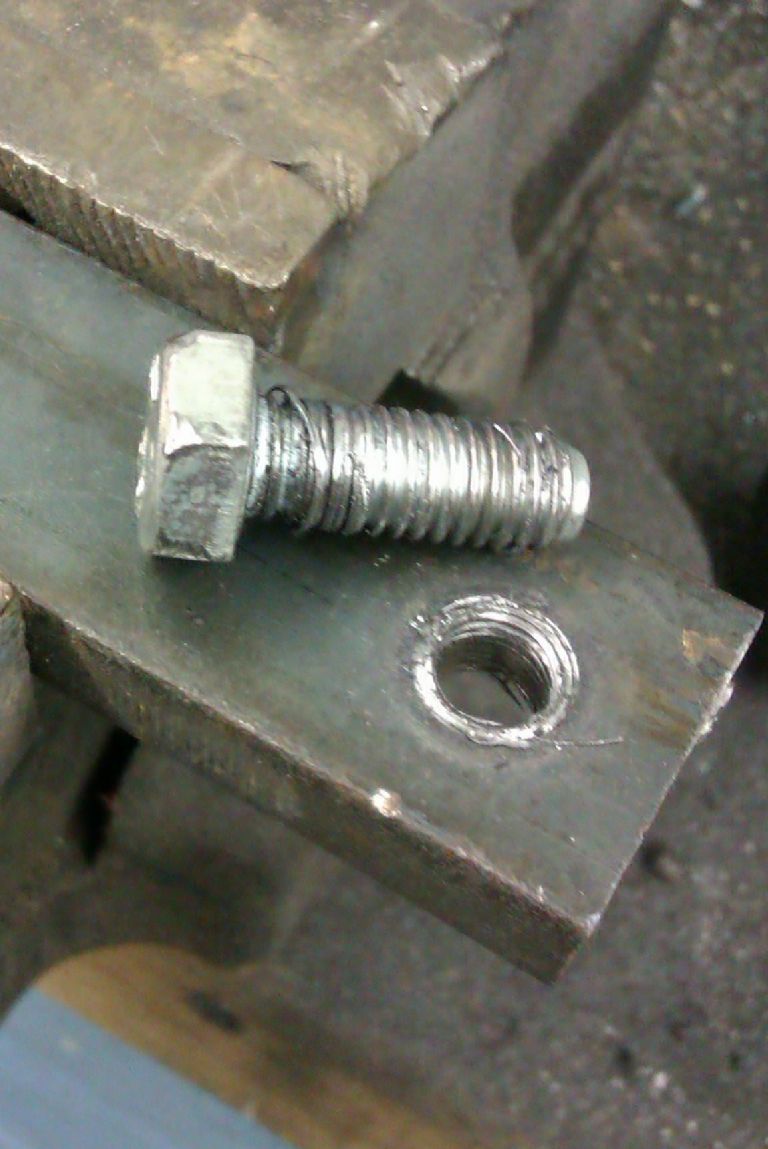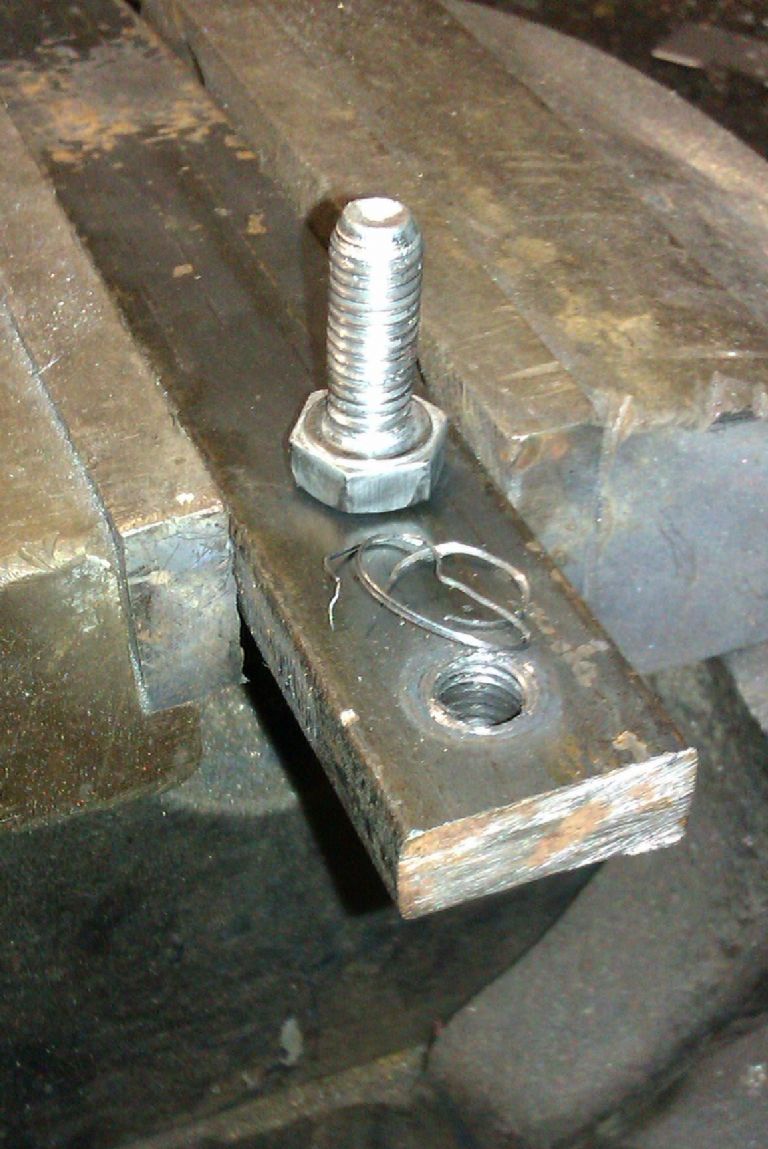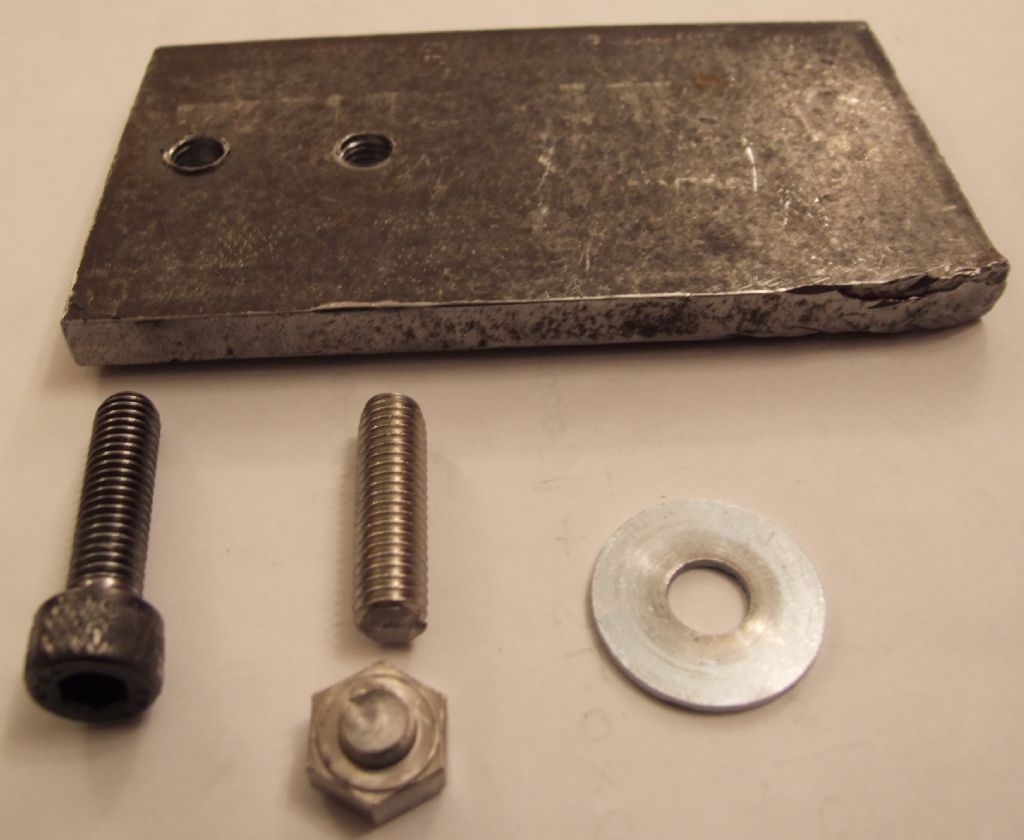Was it this bit Hugh?
“for an Iso M8 coarse, pitch is 1.25 mm, major diameter = 8 mm and for say 60% engagement the tapping size is 7.188 mm. In reality, use a 7.2 mm tapping drill and this will give about 59% thread engagement.”
As I say that does not take into account the male thread, and looking at TC book he says “A die MUST cut a full thread” my capitals.
Now as you know I like to spend Wednesday evenings in the shed so what better way to put all this theory into practice and I did as TC says in his book to drill a hole, tap it, put in my chosen fixing and see what happens.
So I found a bit of 10 mm steel bar, drilled 1/4″ and then opened out to 7.1 whithe what looked like a new drill and it was also still sticky with the original oil.
I then tapped it M8 x 1.25 and also counterbored it 2mm deep so the hole was 1xd deep.
Next I grabbed an average bolt, as you can see it measures 7.8mm
Slipped a washer on the bolt, screwed it in by hand then got a standard ratchet and tightened it up.
Result one stripped thread IN THE BAR and slight damage to the bolt. I rest my case
As I say any thread consists of two parts and its no good just making one easy to tap without considering the other
J
Edited By JasonB on 23/11/2011 17:51:35
Sub Mandrel.








 And there, gentle reader, is the simple and practical answer!
And there, gentle reader, is the simple and practical answer!


 ?
? .
.


